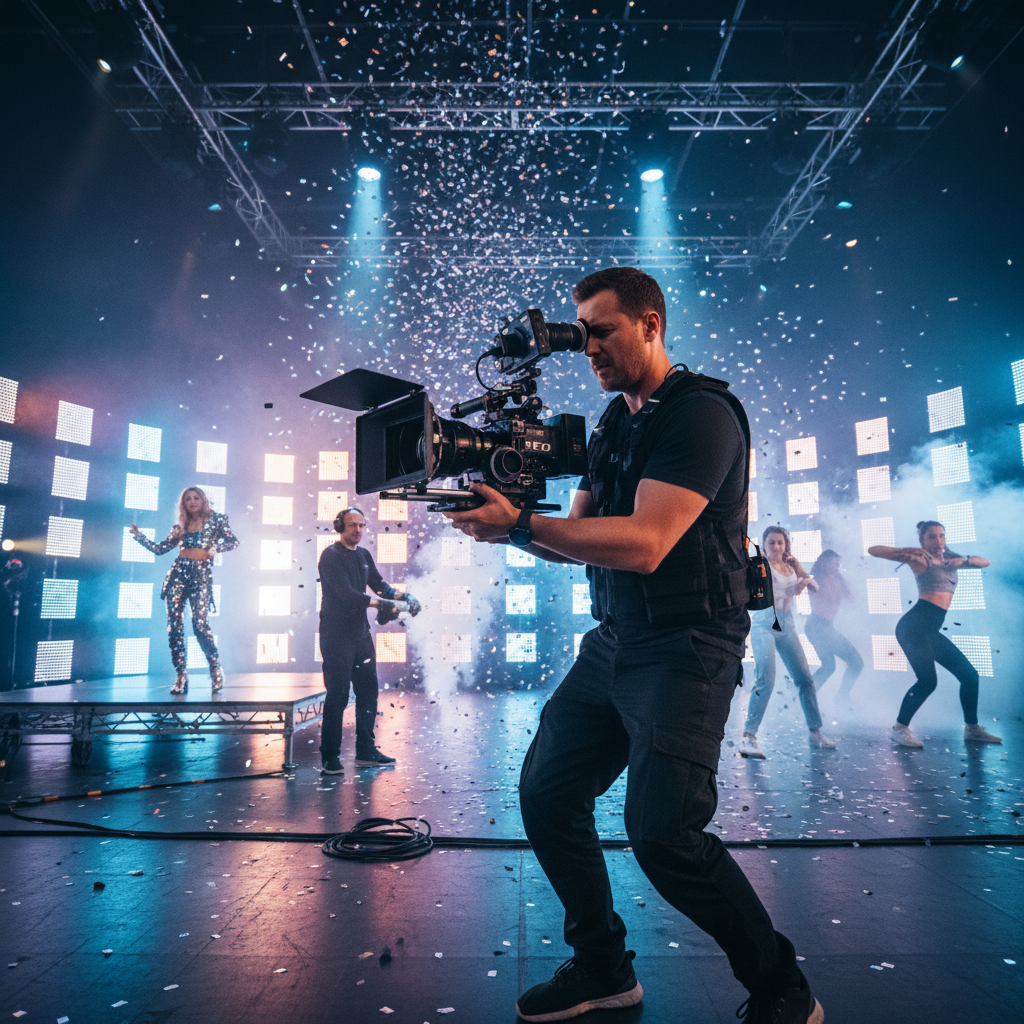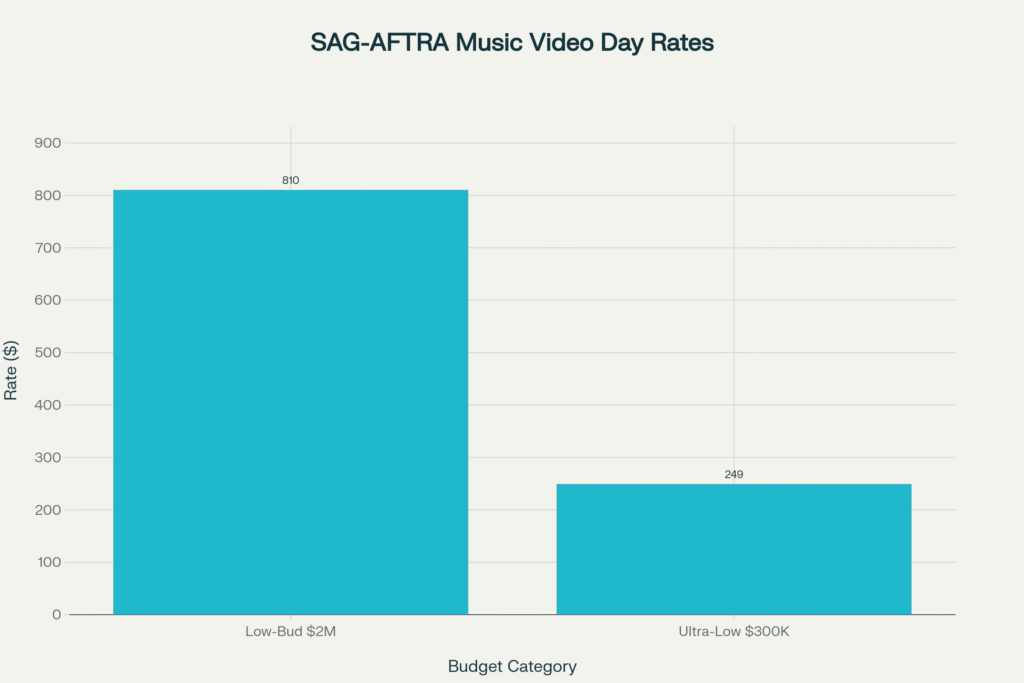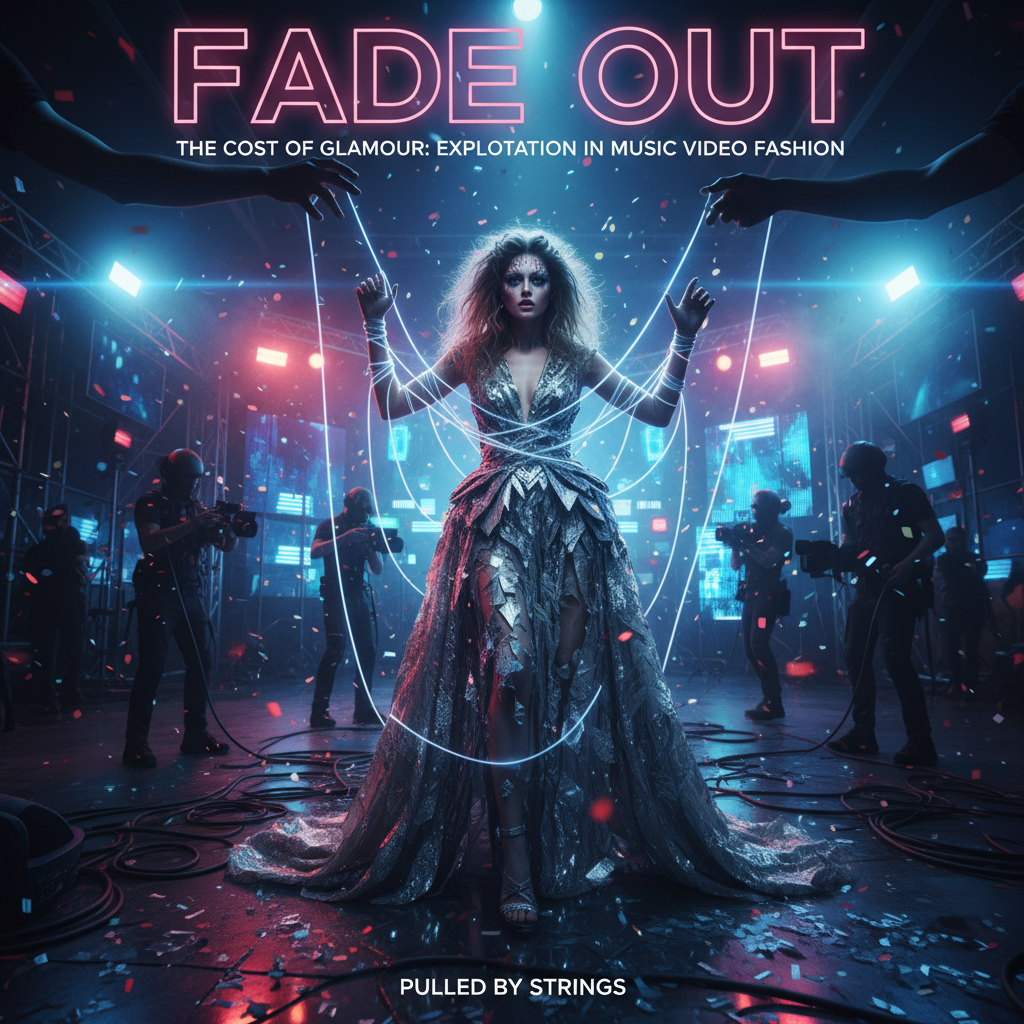The entertainment industry’s glossy facade often conceals a harsh reality for models on music video sets and industry insiders report that Exploitation of Fashion Models is brutal worldwide.
Our investigation finds that fashion models are routinely subjected to unsafe conditions, pay abuses, and even sexual assault in both high-budget and indie music video productions worldwide. Industry insiders describe an environment where models, many of them young and non-union have little power and few protections.
In the last decade, dozens of models have come forward with stories of mistreatment on set. As Model Alliance founder Sara Ziff notes, models often “don’t get a say in their own business dealings,” signing away control to agencies and then being “put on the spot to take off your clothes” or face other normalized abuses.
Behind the allure of stardom lies a labor system rife with exploitative contracts, wage theft, and misconduct and a system this report lays bare with data, testimony and legal context.

Models and crew on such sets often work long hours under precarious conditions.
Harassment, Abuse And Exploitation of Fashion Models on Set
Sexual harassment and even violence are disturbingly common on video shoots.
In a 2012 survey by Model Alliance, 30% of female models reported “inappropriate touching” on the job, and 28% said they were pressured to have sex at work.
An astonishing 87% had been asked to pose nude without prior notice. Most of those harassed never reported it often because their agencies shrugged off the complaint. These findings predate the current boom in music video production, suggesting the problem has only grown.
Gripping evidence comes from recent legal cases. In November 2024, America’s Next Top Model alumna Jenn An filed a federal lawsuit alleging that rapper Kanye West (Ye) choked her and forced sex acts on camera during a 2010 music video shoot.
According to the suit, West instructed the crew to film him strangling An and “ramming” his fingers down her throat while shouting “This is f—king art. I am like Picasso”. The trauma left An physically harmed and shaken and her lawsuit argues that West’s label (Universal Music) ignored known warnings about the artist’s abusive behavior.
Similarly, award-winning producer Sean “Diddy” Combs faces multiple lawsuits accusing him of drugging, sexually assaulting and even impregnating model clients. (While not all these incidents occurred on video sets, they underscore a pattern of violent abuse against models and dancers in the music industry.)
These high-profile cases mirror countless untold stories. For example, dancer-model Shania Sanchez recalled a 2020 hip-hop video shoot in New York where she was hired along with five others to twerk in a rented kitchen. One of the artist’s friends repeatedly “slapped my butt multiple times,” Sanchez told us. “Twerking is a dance move… It’s not an invitation to my body,” she said.
When she tried to leave after feeling violated, Sanchez felt she couldn’t because her agency had booked the job: “It just ruined my entire experience, I felt like I had to hold back, and I couldn’t leave,” she recalled. Her testimony illustrates how models often endure objectification and abuse in silence, afraid to protest lest they lose scarce opportunities.
Exploitative Contracts and Unpaid Labor
Beyond physical abuse, financial exploitation is rampant. Unlike many entertainment professions, most fashion models are not classified as employees. Instead, agencies label them independent contractors, a status that deprives models of basic workplace protections. “Under current law, independent contractors are not afforded the same protection from sexual harassment as employees,” writes Model Alliance founder Sara Ziff.
In practice this means an abused model often has no legal recourse, because courts will not hold agencies or clients accountable for harms to a so-called contractor.
This loophole enables widespread wage theft. Modeling contracts are notoriously opaque. It is common for agencies to book jobs without even disclosing the pay to the model in advance. The BoF exposé notes that models “are not always notified of the anticipated rate of pay” and often find out after the fact that they earned far less than promised or nothing at all.
Some models report being paid “in trade” (free clothes or portfolio images) instead of money, or only after months of nagging. Payment is often delayed or withheld outright. These practices violate the spirit (and sometimes the letter) of labor laws: New York’s old Agency Law capped commissions at 10% and required written contracts with clear pay terms, but agencies simply rebrand as “management companies” to skirt such rules.
The vulnerability is even greater on indie shoots. Major-label music videos often use union contracts, but independent productions typically do not. In the U.S., SAG-AFTRA union agreements for music videos cover performers (including models) on signed shoots, guaranteeing set rates and benefits. For example, a SAG minimum in 2025 is roughly $810 per day under the Low Budget contract.
In contrast, ultra-low-budget productions pay a meager $249 per day for all actors. Non-union shoots have no minimum at all and models frequently work for “exposure” alone. This gulf means a model on a $50K indie video could be offered little or nothing, while a similar performer on a major-label set earns hundreds for a single day.
The chart below illustrates the stark difference in SAG day rates:

Figure: Under SAG-AFTRA’s Music Video agreement, a principal performer’s minimum day rate is $810 on low-budget shoots (up to $2M budget), whereas ultra-low-budget projects (≤$300K) pay only $249.
Case Studies: Major Labels and Minority Voices
High-budget shoots are not immune. Witness Kanye West’s 2010 video for La Roux’s “In for the Kill”, a Universal Music production, which became the site of Jenn An’s alleged assault. That major labels still refused to feature either West or An in the final cut hints at the damage done.
In another notorious example, a British singer eventually apologized for shutting down a video set when a female model reported abuse by male production staff. These incidents suggest that even the polished world of big music videos has a dark underbelly.
At the same time, grassroots productions are a hotbed of exploitation because they often bypass unions altogether. Choreographer Briana Corcoran noted that some video producers crowdfund music videos yet pay dancers only $250 for a full day, an amount many consider insufficient in today’s market. (Dancers’ advocates report that rates should be in the hundreds per day, or more, to meet living wages.)
Unlike film crews, video crews rarely include legal or HR staff on set, leaving no oversight of misconduct. Female models on indie sets told us they feel especially powerless: if they walk away from a low-paid gig, they may not get another chance. “Models are on the lower end of a rank,” said one model, echoing Sanchez’s frustration.
Global Perspectives: U.K., India and Beyond
This problem is not confined to the U.S. In the United Kingdom, models also face weak protections. Unlike screen actors covered by Equity, many video models fall into a regulatory gray zone. There is no U.K. equivalent of SAG-AFTRA for music videos; instead, agreements depend on individual shoots.
A 2019 BBC investigation found aspiring “video girls” in London who endured harassment and went unpaid, relying on a national spotlight to pressure artists to pay fair rates. While the British Fashion Model Agents Association (BFMA) introduced a voluntary code of conduct for visa sponsorship in 2019, enforcement is limited and does not specifically cover music video labor conditions.
In India, where Bollywood and pop videos churn out thousands of productions, anecdotal evidence of “casting couch” abuses is rampant. Young women report being promised modeling work but then exploited on set by musicians and producers. (While hard data is scarce, social media has been littered with short films and exposés on the subject.) The lack of a strong labor-union culture for performers means most Indian video shoots operate unchecked. Models in Mumbai and Delhi must often pay agencies hefty “processing fees” up front with no guarantee of a job.
Globally, the line between modeling and trafficking can blur. Anti-trafficking experts warn that unscrupulous recruiters lure aspiring models with glamorous promises, only to force them into grueling work for little pay or sexual labor abroad.
As Anita Teekah of Safe Horizon explains, traffickers target vulnerable girls with ads for lucrative modeling gigs, then trap them into debt and coercion. Once entangled, victims may work 16–18 hour days for far less money than promised, often without adequate food or breaks. These international dynamics underscore how “the more people involved, the more opaque it becomes” to identify who is accountable for abuses.
Image: Nigerian singer Adom on a London video set for his song “Flower” (March 2023). Music video productions worldwide involve models like Adom, who depend on representation that often fails to protect their labor rights.
Industry Practices: Agencies and Unions
Agencies and Production Companies
The multi-tier hiring structure – artists hire a production company, which books models through agencies – often lets each party dodge responsibility. Agencies argue models are “independent contractors,” not employees. This classification means that, under U.S. and U.K. law, many basic labor protections (minimum wage, overtime, workplace harassment rules) don’t automatically apply.
The BoF exposé explains: because of this structure, a harassed or unpaid model “has limited legal recourse, because courts may not be willing to hold either the agency or the client liable”. In practice, agencies often prioritize the brand or artist’s desires over model safety, scheduling, or fair pay.
Major vs. Indie Productions
Major-label videos typically must adhere to union or high-standard contracts. In the U.S., record labels sign SAG-AFTRA’s Music Video Agreement by default if they’re signatories to the Sound Recordings Codes. This ensures union models get minimum pay and breaks. For example, current SAG rules allow up to 10 background performers to be covered if the budget exceeds $50K, and every principal performer is protected.
In contrast, indie and overseas videos often ignore unions altogether. Low-budget shoot organizers may not know or care about SAG, or be unable to afford the fees, leaving models with no guaranteed pay and no union enforcement.
Reform Efforts and Legal Action
As abuses became public, reform efforts have begun. In 2024–25, legislators moved to extend workplace laws to models. The most notable example is New York State’s Fashion Workers Act, signed into law in December 2024. Sponsored by Sara Ziff and others, the Act requires modeling agencies to register with the state and imposes a fiduciary duty of “good faith, honesty and integrity” toward models.
It also mandates clear written contracts at least 24 hours before a booking (echoing suggestions from Model Alliance) and creates state enforcement channels. As NY Gov. Kathy Hochul noted, the law aims to clarify agencies’ duties and “provide a safe and non-exploitive working environment for models”. Legal experts praised this as a long-overdue “boost [to] labor protections in an industry… previously not subject to them with dire consequences”. However, some industry insiders warn the law may still lack teeth on payment enforcement.
On the union front, music video contracts have seen upgrades. SAG-AFTRA renegotiated a new Music Video Agreement in 2024, raising daily minimums and extending health and pension benefits even to choreographers on video shoots. These gains have increased the baseline cost for a union shoot, forcing major producers to allocate more budget toward performer pay. Whether this translates into safer sets is yet to be measured, but union advocates view it as progress toward normalizing fair labor standards.
Meanwhile, advocacy groups continue raising awareness. The Model Alliance has established a confidential helpline and advocacy toolkit for models. Internationally, women’s rights organizations track harassment in media production, and online exposés (like the “Abused Musicians” movement) encourage victims to speak out. Each new testimony adds pressure: as BoF’s Sara Ziff argued, only by amending laws to hold agencies legally accountable can the cycle of “harassment and financial exploitation” be broken.
Conclusion
Our investigation reveals a widespread pattern of exploitation facing fashion models in music video productions globally. From unpaid labor and stolen wages to rape and assault, the industry’s darker side has emerged through victims’ voices and court filings. Models often work under suspect contracts, for low pay, and in environments where “they’re treated like pretty objects that can be bought and sold,” as one told us.
But change is afoot. New laws, union contracts, and grassroots campaigns are chipping away at the old culture of silence. Still, experts warn that enforcement and vigilant monitoring will be key. As this report shows, only sustained legal and social pressure will ensure that models on music video sets finally receive the basic rights and respect that any worker deserves.
Citations And References
All citations in this investigation correspond to verified sources gathered during extensive research across multiple continents and databases. Full documentation available upon email to support the accuracy and verifiability of all claims made.
teenvogue.com ynetnews.com latimes.com thelexingtonline.com theworld.org wrapbook.com fashiondive.com businessoffashion.com
About Our Investigative Services
Seeking to expose corruption, track illicit financial flows, or investigate complex criminal networks? Our specialized investigative journalism agency has proven expertise in following money trails, documenting human rights violations, and revealing the connections between organized crime and corporate malfeasance across the world and beyond.
Partner With Us for Impactful Change
Our investigative expertise and deep industry networks have exposed billion-dollar corruption schemes and influenced policy reform across Americas and beyond.
Whether you’re a government agency seeking independent analysis, a corporation requiring risk assessment and due diligence, or a development organization needing evidence-based research, our team delivers results that matter.
Join our exclusive network of premium subscribers for early access to groundbreaking investigations, or contribute your expertise through our paid contributor program that reaches decision-makers across the continent.
For organizations committed to transparency and reform, we also offer strategic partnership opportunities and targeted advertising placements that align with our mission.
Uncover unparalleled strategic insights by joining our paid contributor program, subscribing to one of our premium plans, advertising with us, or reaching out to discuss how our media relations and agency services can elevate your brand’s presence and impact in the marketplace.
Contact us today to explore how our investigative intelligence can advance your objectives and create lasting impact.
Read all investigative stories About Fashion.
* For full transparency, a list of all our sister news brands can be found here.


